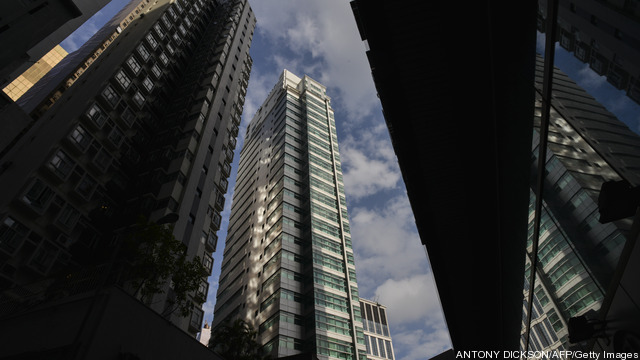Buildings are responsible for a third of harmful greenhouse gas (GHG) pollution from U.S. electricity use, with that percentage rising dramatically in urban centers. Chicago is no exception: Buildings account for approximately 70 percent of the city’s GHG emissions. Moreover, many buildings use more energy than they need to, which is unnecessarily expensive and damaging to the environment. Although… Keep reading →
LEED
How To Measurably Improve Existing Buildings’ Energy, Water, And Waste Impacts
By Environmental Defense Fund Energy Exchange BlogSign up and get Breaking Energy news in your inbox.
We will never sell or share your information without your consent. See our privacy policy.Game On: DOE Initiative Supports Leadership In Sports Venues
By Jason Hartke | Commercial Buildings Integration Program ManagerEnergy Secretary Ernest Moniz takes a slap shot at Boston College’s Conte Forum to promote green sports arenas. | Photo by Simon Edelman, Energy Department. They are the places where amazing happens. Where we hear the roar of the crowd. Where our hearts are lifted, and yes, sometimes shattered. They are the professional and collegiate… Keep reading →
How American Businesses Are Leading The Way In Green Building Technology
By Pat Adams | U.S. Department of EnergyIn 2014, two daredevils broke into a construction site and climbed to the top of the second tallest building in the world: the Shanghai Tower. You may recognize it from their vertigo-inducing viral video, which leaves no doubt that the Tower is tall. What it doesn’t show is how much American businesses have had… Keep reading →
Energy Department Officially Dedicates New National Security Campus in Kansas City
By U.S. Department of EnergyKANSAS CITY, MO – Secretary of Energy Ernest Moniz was joined by the Administrator of the National Nuclear Security Administration (NNSA), Lt. Gen. Frank Klotz, United States Air Force (Ret), U.S. Representatives Emanuel Cleaver II and Vicky Hartzler, and other local officials today to officially dedicate the new National Security Campus in Kansas City. As… Keep reading →
Preliminary Results Find Demand Response-Green Building Partnership is Off to a Great Start
By Environmental Defense Fund Energy Exchange BlogBuildings account for 40% of our nation’s electricity use. In 2012, power plants spewed about 2 gigatons of global warming pollution into our air, which was about one-third of total U.S. emissions. That’s why EDF and the U.S. Green Building Council (USGBC) teamed up to launch the Demand Response Partnership Program (DRPP) aimed at increasing the participation from commercial buildings… Keep reading →
Delaware Company Breathes New Life into Old Post Office Building
By US Department of EnergyFor 23 years, a Wilmington, Delaware, computer-aided design firm leased its office space. That all changed in 2010 when Brandywine CAD Design, Inc. (B-CAD) — a company that provides computer-aided drawing (CAD) services to architectural, engineering and construction clients — purchased the vacant Talleyville Post Office. Today located in the city’s prime transportation corridor, the… Keep reading →
Former First Lady Hillary Clinton gave an impassioned keynote address at last week’s Greenbuild 2013, billed as the world’s largest conference and expo dedicated to green construction. While it can be difficult to make energy efficiency sexy – maybe it should be called Dark Energy or something catchy – this speech provides examples of energy… Keep reading →
Green Buildings and Sustainable Design: Creating Clean-Energy Communities
By Energy Solutions ForumThe following is an excerpt from an Energy Solutions Forum Policy Primer for the New York Energy Week Energy Asset Management Forum. Green buildings and sustainability projects include daylighting, landscape water use reduction, indoor water use reduction, and on-site/off-site green power with the aim to reduce environmental problems and provide long-term health benefits. Federal laws and executive orders require… Keep reading →

In 2002, more than a dozen structures and countless trees were scorched in the course of the Biscuit Fire, which took down roughly 500,000 acres in southern Oregon. Now a Dayton-area winery with a history of green innovation – Stoller Family Estate – has put a number of those trees to use in its new tasting room, along with a whole lot of solar power.
This wood comes courtesy of the “standing dead,” i.e., trees that were killed by the fire but were left standing, often in excellent shape for those willing to make use of salvaged wood. Stoller put that wood to work in constructing its new tasting room, which features mostly reclaimed wood. Wood from the Biscuit fire was used in the building’s rolling ceiling, while the tasting room’s large support columns were upcycled from an old Portland warehouse. Keep reading →

How successful has the U.S. Green Building Council‘s (USGBC) LEED program been in bringing green building to the commercial sector? Exactly two billion square feet of successful, according to a recent announcement [PDF] – with seven billion more coming down the pike.
A number of factors converge in LEED’s popularity with the commercial sector – among them, energy efficiency and publicity. Because commercial buildings leave the lights on longer and require more of their HVAC systems than residential structures, green building systems can pay for themselves in short order (and serve to lower operating expenses thereafter). Also, that lovely glass plaque announcing a building’s LEED status to the world has proven attractive to many companies looking to build a brand and gain favor with green-minded customers. Keep reading →








